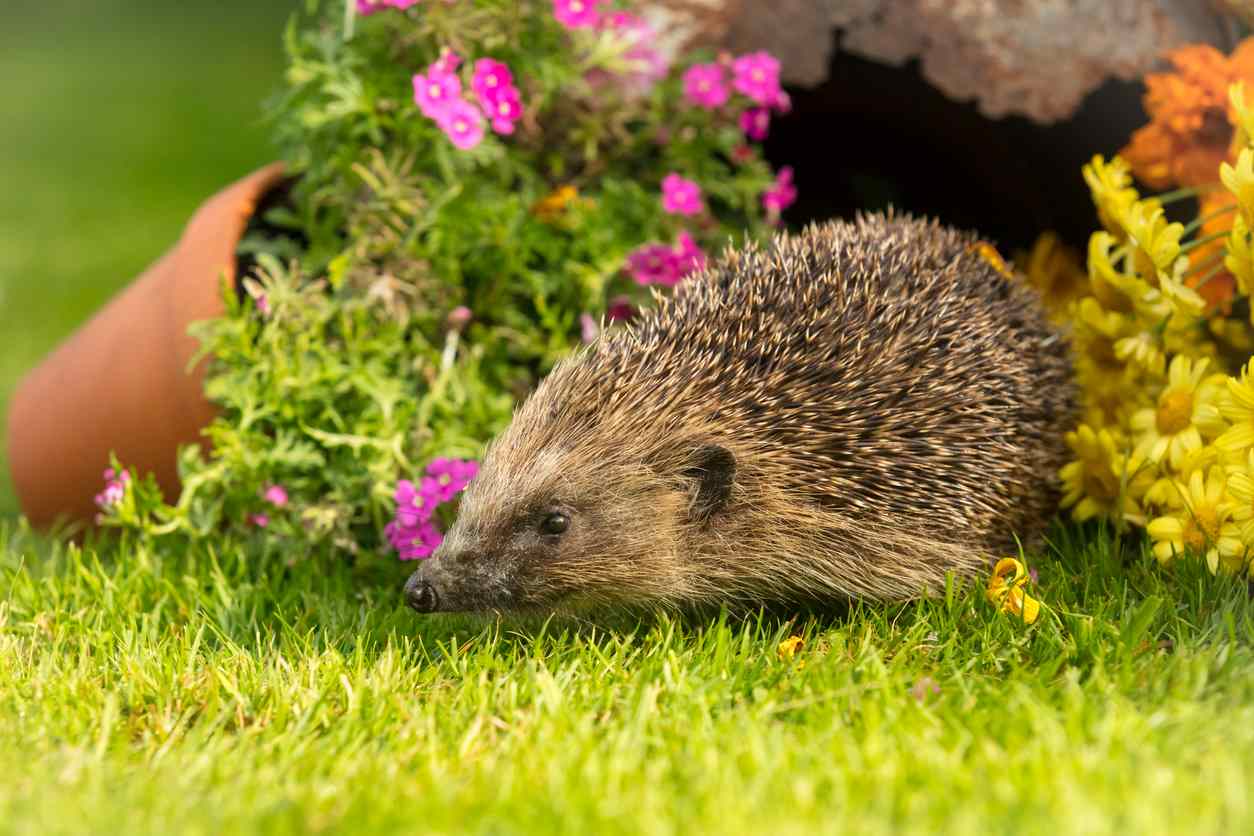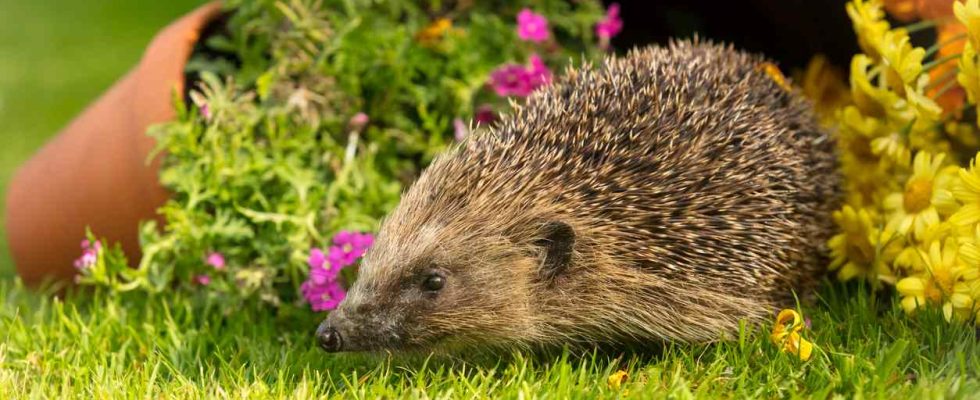
Let’s get to know the hedgehog better
The hedgehog, this small mammal measuring no more than 30 cm and recognizable by its white-tipped quills, is a semi-nocturnal animal that sleeps most of the day and goes hunting at night. It can then move over great distances and pass from garden to garden, because it is not only an excellent climber, but also capable of digging to get under fences.
He hibernates from October to April in a nest made with dead leaves and dry grass. As for its diet, it is essentially composed insects, slugs, snails, etc., but also seeds and fruits. In hedgehogs, females give birth to 4 to 6 young during the summer, they nurse them for 2 months, then they leave the nest. During the first winter of their life, the survival rate is now increasingly low.
Why watch out for hedgehogs?
With the arrival of fine weather, on the one hand, gardeners return to their activities in their garden and, on the other hand, hedgehogs begin to come out of hibernation. They are then exposed to the dangers that represent for them lawn mowers, brush cutters, etc., all these tools that can scalp them, cripple them, etc.
Likewise, when gardeners engage in the prohibited practice of incineration of piles of plants, the hedgehogs who had taken up residence there may be cremated at the same time. The biggest predator of these small mammals is man.. You should know that the life expectancy of hedgehogs has fallen from 10 years to only 2 years and yet, they are very useful in a garden.
Indeed, the hedgehog is an insectivore which, despite its small size, plays a large role in maintaining biodiversity, because it feeds on slugs, snails, larvae, parasites and other pests. For this reason and for the health of your garden, it deserves that you pay attention to it and that you adopt actions that will allow the survival of this animal which, since 1981, has been one of the protected species.
The right actions to adopt
In order to preserve hedgehogs, it is necessary to be vigilant. Indeed, the most important cause of mortality of these small animals is man. Here are some protective actions to adopt.
Check spaces with piles of plants
When you do your spring cleaning, check places where leaves, branches or pieces of wood are piled up. And for good reason, the hedgehog tends to seek refuge in these piles to spend the winter there until April, when it will slowly emerge from its hibernation.
So, before passing the brush cutter in an area where there are piles of plants, first check that no hedgehogs are still there. This will prevent you from injuring him or even killing him accidentally. You can also leave these piles somewhere, they will serve as a permanent refuge.
Be careful with certain machines
- With the robotic mower: It is recommended not to start it until you have checked your entire land. Likewise, avoid running it at night when the hedgehogs are out.
- With the lawn mower: When the grass is tall, it is best to start mowing from the center of the field. So, if a hedgehog is hiding in the grass, this will give it time to escape.
- With the trimmer : As the grass is often higher at garden borders, a hedgehog can be hidden there. It is therefore important not to start the trimmer before checking.
Forget about burning
If burning an old pile of plants is a solution that tempts you to get rid of them, forget it. Not only was a hedgehog able to make a cozy nest there, but this practice is also prohibited. If you still wish to do this, take the trouble to ensure that your pile of plants does not harbor a hedgehog, but do it without tools so as not to risk injuring him or his offspring.
Do without pesticides
If you want to benefit from the benefits of the presence of a hedgehog, it is necessary to ban pesticides. You should know that pesticides, such as anti-slug pellets, poison many hedgehogs every year, even though they do the same job very well naturally. If you don’t yet have a hedgehog in your garden, but you’re hoping to see the tip of one’s snout, favor natural solutions to fight against slugs.
Protect the premises
In addition to being careful with sharp materials that could injure hedgehogs, it is necessary to protect certain areas which can be dangerous. Indeed, even if the hedgehog is an excellent swimmer, if he falls into a swimming pool, he will end up drowning, because he will not be able to get back up and will become exhausted. To secure your swimming pool, you can cover it or install a rough board which will allow the hedgehog to rise again. The same goes for ponds.
Maintain a wild area in your garden
Leave a wild area of grass in your garden, which you do not mow. A hedgehog will be able to find refuge and hide there, especially if you leave a pile of wood or leaves in this space, or if you install bushy bushes which are preferred by hedgehogs.
Do not try to cure a hedgehog
If you find a healthy hedgehog in your garden, let him go about his life, taking care not to disturb him or hurt him. In summer, when temperatures are high, you can provide it with water. On the other hand, if you notice that he has a problem, you can contact a care center or the LPO in your region who will tell you the right actions to adopt.

